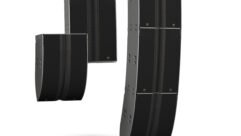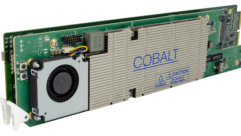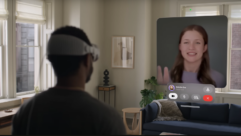Line Out: Back to the Future
Dec 1, 2003 12:00 PM,
By Jim Ford
From a business standpoint, survival is simple and complex. The fundamentals are self-evident; have a passion for what you do, be excellent at your trade, give customers more than they expect, keep your word, and educate yourself. However, making a profit is difficult. After you pay taxes, train workers, pay for benefits and health insurance, and invest in tools, computers, and equipment, you must provide a competitive price. The key is to hold down operating costs, to provide quality work, and to never sell your work for less than it’s worth.
As the industry becomes more complex, the number of manufacturers and their products requires more time to determine the quality, functionality, and value to the project. Many audio manufacturers produce speakers, mics, amplifiers, and mixing consoles. The same is true for video and lighting manufacturers. The constant introduction of new products and technology places a high demand on the technical knowledge of your workforce. Education and training are mandatory to stay competitive.
The complexity of the operation and setup of equipment has also increased. The migration from analog to digital and the introduction of computer control require knowledge of computers and networking. In addition to understanding the installation of equipment, technicians and customers must install, configure, and use software to operate and manage systems.
The quantity and complexity of government, health, safety, employment, and legal documentation and reporting continue to expand. Compliance with these regulations and requirements places a burden on clerical and financial staffs. In terms of performance and quality of installed systems, the industry has made improvements, and the ability to control systems by computers and software has given the creative users of our installations precise and repeatable control over performances.
Several factors have helped change the industry. Performance and quality of sound and visual images have improved, and computers and software control those systems. Techniques used to measure installed systems have progressed, and systems benefit from computer modeling and analysis before installation.
The industry has also changed because of the growth of sound and video systems in corporate, government, and religious facilities. We have more opportunities to install larger and more complex systems. The advancement of technology at home and in the workplace requires training at all levels. This need for educational and training facilities has increased the demand for integrated and installed A/V systems. Educating and training employees and customers are the biggest challenges.
In the future, computers, software, and computer networks will dominate A/V and lighting systems, from the computer modeling of the technical performance to the physical control of the system during the presentation or performance. The integration of design by architects, engineers, and A/V designers will be seamless over the Internet. Design professionals will use the same three-dimensional CAD drawings as the foundation for their area of design. With modeling tools, they will specify the exact aiming points, power levels, timing, and equalization. Designers will provide presets for scenes for sound, video, and lights that will be loaded and saved into digital control desks. The customer will be able to use the presets from the first day of operation.
The systems’ user interfaces will be wireless and via touch panel, automated control desks, handheld computers, and voice. Digital systems will become more intelligent, and they will analyze the room acoustics and lighting conditions and will also make adjustments as the audience and physical conditions of the performance venue change. The systems will provide diagnostics on a regular basis and send service alerts to the integrator. Measurement of operating parameters and performance will be integrated into the systems. Speaker systems will be self-powered, and communication of audio and control will be over the computer network. Video screens will be prevalent throughout the work space and will provide every type of digital media on demand.
Many of these technologies exist and will continue to mature. The result will be systems that are more highly developed at the time of design; that measure and set operating parameters in response to live performance conditions; that diagnose, notify, and reconfigure their circuitry as a result of a hardware failure; and that give the user more intuitive control.
A 30-year veteran of the industry,Jim Fordis president of Ford Audio-Video.










